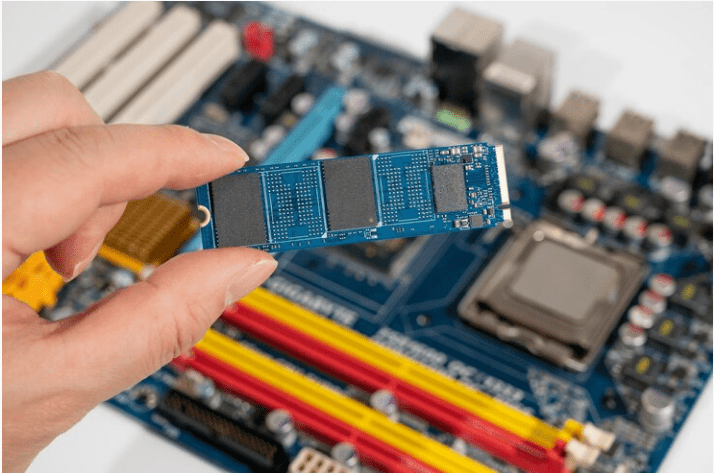Here at Taneja Group, we think enterprises ought to be agile and flexible, quickly leveraging their forward-deployed remote and branch offices as a competitive weapon to gain market opportunity with the presence that only a physical office brings. Unfortunately, we’ve seen that as a business expands its footprint into new regions it can also suffer major growing pains with slow unwieldy deployment and an increasingly costly IT burden.
The traditional approach to remote and branch office IT relies on locally deployed infrastructure and admin skills. Unfortunately, this often makes these “edge of network” offices cost-inefficient, inflexible, painful to support, and left operating at high risk of downtime and data loss if not complete operational failure. In many ways “field” deployed servers and storage act as big anchors holding back potential business velocity.
A big part of this problem isn’t just managing physical resources – it’s also about controlling data. For governance, integrity, and business continuity reasons, getting a complete handle on data that is primarily maintained in remote offices far from a data center presents IT with a significant challenge. Data tends to spread out at a big expense when attempting to also distribute suitable IT controls and management.
What the new agile distributed enterprise needs are solutions that consolidate data under centralized IT control while supporting business productivity at the business “edges” – and even helping accelerate it.
The Distributed Data Challenge
At the CIO level, the biggest challenges stem from having critical corporate data exist in multiple remote locations. Maintaining current data at branch offices is a key business enabler helping drive local business decisions, but at the same time corporate analysis of centralized data can provide strategic business intelligence. This data spread also has obvious security and cost of capacity concerns, but perhaps most concerning is providing for appropriate data protection and disaster recovery.
There are many solutions in the market aimed at backing up remote systems, but ask anyone who has had to restore a remote office with them and you will likely hear that it’s a long, suspenseful process, far from guaranteed. And the point of remote offices is that they aren’t located in secure raised-floor facilities, but are found in places where they can readily suffer power and connectivity problems, not to mention common environmental and location hazards (e.g. broken pipes, spilled coffee, or untrained staff “help”).
This challenge is only increasing for businesses where the main action is in their branch offices. There is constant pressure to increasingly distribute IT processing for local “point of the sword” productivity, agility, and innovation. Unfortunately, physical IT resources and staff are hard to parcel out effectively or efficiently – there can be a serious mismatch in distributed capabilities between IT and the business, what IT folks might call branch office “impedance”.
Remote Office Architectural Best Practices
At Taneja Group we see four evolving practices that can not only alleviate this misalignment at scale, but can actually magnify IT capabilities at the remote branch. IT challenged organizations should look to:
1. Virtualize as much as possible in the branch. Enterprise data center IT is literally (and figuratively) too “heavy” for agile forward deployment.
2. Converge remote resources. The smaller and more converged the physical IT footprint at the edge becomes, the more flexible and responsive IT can be to growth, changes or problems.
3. Consolidate the data footprint. Maintain the primary copy of data in a data center where IT can cost-effectively apply appropriate management. Replication, deduplication, and other optimizations can provide branch offices with high-quality remote storage services.
4. Project virtualized applications and consolidated data as-needed out to the edge. After virtualizing servers and consolidating data, dynamically push out application and data “images” to execute locally for performance and productivity, while holding actual source data safely in the data center.
The first two practices have been well proven within data centers, and bringing them to the branch office IT architecture is a natural evolution. Server and storage virtualization and convergence solutions from the likes of VMware, Microsoft, Cisco, VCE, Dell, HP and others for the data center are well known. There are emerging solutions intended to be branch “friendly” (e.g. Dell’s VRTX converged blade and storage chassis) but virtualization and convergence are only the first steps in transforming the way IT can accelerate branch and remote offices.
Once both a consolidated footprint and forward projection capability are developed, IT can essentially provision, recover, or reconfigure branch IT capabilities on-demand. This represents a major acceleration over traditional remote IT because now deploying a new branch or recovering one that has “gone down” is a quick, painless process, while all data remains under tight IT management in the data center. In addition, maintaining all the remote machine images in a datacenter enables centralized patching and management instead of having to “visit” each remote server in-turn.
Projecting To The Forward Edge
One kind of IT projection capability is Virtual Desktop Infrastructure (VDI). VDI can deliver secure remote access to high-end computing running on data center hosting, leveraging consolidated data center storage. Enterprise scalable VDI platforms include VMware View, Citrix XenDesktop, and NComputing vSpace. VDI is a great solution, but its effectiveness at remote offices depends highly on the network, and can be challenged by long distances (latency), bandwidth constraints, and less than perfect network availability. Without a functioning WAN, there is no productivity at the network edge location.
A more robust kind of projection is illustrated by the Riverbed Granite solution with which local users can get “local” access and performance to data that’s being stored in and projected from the data center. Technically, consolidated data center storage on enterprise-grade SAN (iSCSI or FC) is made remotely accessible as local virtual block storage in the branch office. Granite internally handles remote data access, intelligent caching and pre-fetch to the point where most network issues won’t noticeably impact remote storage clients. To also project applications, one can use this kind of storage projection to transparently deliver virtual machine images hosted in the data center out to a branch office hypervisor for local execution.
For example, the Wisconsin Army National Guard, with 70 “branch” offices across the state, is leveraging Granite’s storage projection to not only eliminate remote infrastructure and IT support in local armories, but also to tightly control its WAN operating costs. All critical data is completely stored in the main data center, so while branches have quick access, data protection and server management all happens centrally. It’s easy to imagine how this scheme could extend to temporary forward deployed locations in more hazardous and risky locations too.
Accelerating The Edge
It only makes sense to reduce the physical IT deployment at the branch office if those forward edge users aren’t expected to sacrifice performance or any other service level. Even better, we think given some of the abilities today to project data center hosted, enterprise class infrastructure out to the edge, that branch users can get better service than they would with limited locally deployed resources. For example, damaged branch IT resources can be “recovered” almost instantly – virtual machines, desktops, and even databases all re-projected if need be directly back out of the data center.
We suggest there is a better return with a strategic “edge” virtualization project creating increased business continuity, productivity, and competiveness than by pursuing other more tactical branch office IT projects. Today there are solutions for consolidating data and projecting IT services that have proven robust and effective in large-scale environments. CIO’s ought to seriously compare these transformative projects against proposed “business as usual” domain/silo level resource investments.
If IT can cut costs through consolidation and centralizing control, the business gains flexibility and speed in provisioning, and users get more agile, powerful, and resilient services, then it seems inevitable for distributed organizations to adopt and deploy projection solutions that help “accelerate the edge”.




